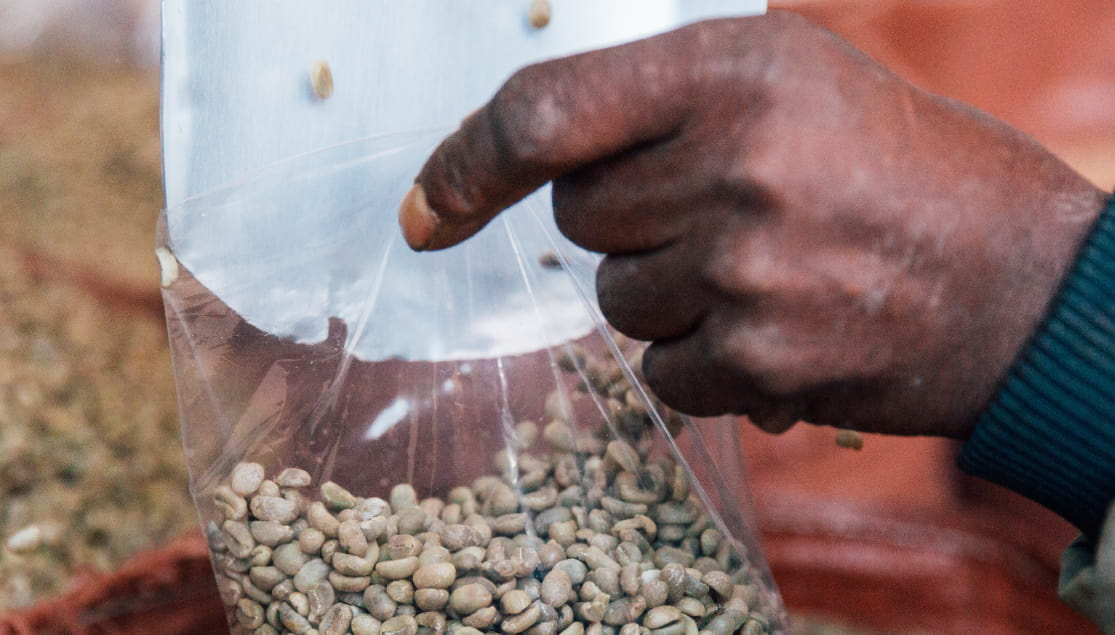Have You Heard of Coffee Processing?
If you’ve dived into the world of coffee, you’ll probably notice a growing dialogue around coffee processing methods. You’ve likely seen words like washed, natural and honey process on retail bags or even on your favorite shop’s pour over menu, but have you given much thought as to what that actually means? We’re not here to tell you what your preference should be, but we think everyone can benefit from understanding these terms. Let’s drop some coffee knowledge.
What is Coffee Processing?
Simply put, coffee processing is the act of removing everything surrounding the coffee bean (skin, pulp, mucilage and parchment) before it gets roasted, ground and makes its way into your morning cup. There are several ways in which this can be done, and the impact each method has on the taste of the resulting coffee is more profound than you may think.
What Are the Most Common Coffee Processing Methods?
- Washed (Wet) Process – Once coffee cherries are harvested, they are de-pulped to remove the skin and fruit around the bean. Then, the coffee beans are placed in vats where they naturally ferment for about a day. This fermentation process breaks down the mucilage - a slimy sugary substance surrounding the coffee bean. Once the farmer decides the coffee fermentation is complete, she will wash the coffee with water to conclude the process. The coffee is then dried before it is ultimately bagged and shipped around the world for roasting and consumption. Since coffee produced in this manner derives its taste from the bean itself as opposed to the surrounding elements of the coffee cherry, you taste what’s on the inside, not the outside. All aspects from the grow (soil, weather, ripeness) to processing (fermentation, washing, drying) shape what you taste in your cup – there is very little the coffee bean can hide behind. For this reason, many specialty coffee drinkers love the way this method highlights true origin nuances.
- Natural (Dry) Process – Ripe coffee cherries are harvested and then immediately placed on raised beds or patios where they remain until they are fully dry. At this point, the fruit is removed from the bean using a de-pulping machine. Because the fruit was intact during the slow drying process, the resulting coffee bean picks up a lot of the flavor from the fruit itself. This is a method very common in certain regions like Ethiopia, and the flavor attributes can be very fruit-forward and intense. In order to execute a beautiful natural coffee, the beans must be picked at optimal ripeness, and the climatic conditions must lend themselves to the proper drying interval.
- Honey Process - This is somewhere between washed and natural and is the third most common way in which coffee is processed. Harvested cherries are de-pulped, and the coffee beans (still containing some fruit and pulp) are laid out on beds to slowly dry. There are various classifications of honey process based on the amount of pulp (mucilage) on the coffee during the drying process - Yellow, Red, Black or White. Honey Process, named after the sticky sweet remnants of fruit and pulp left on the beans during the process, tends to have fruit-forward notes, but not nearly as exaggerated as naturals and a bit more sweetness, acidity and complexity to the mouthfeel than washed. There has been a lot of recent experimenting with this process as farmers play with the amount of mucilage they leave on the beans and subsequent flavor.

How Do Farmers Decide Which Process to Use?
The short answer is it’s a mix of tradition and business. There are regions that traditionally process their coffees using one method or another. For instance, most central American countries (i.e., Nicaragua, Guatemala) have favored the washed process, while countries like Ethiopia and Brazil have largely preferred natural processes. With that said, coffee is a business, and many farmers will adjust their process based on that season’s climate. Periods with lots of rainfall favor washed methods since the outside fruit can be compromised. In contrast, dry seasons lend better to natural methods because sugars do not get washed out in the process. Producing in a way that showcases the best possible attributes of a coffee in a given season will ultimately deliver higher prices at the market.
What Does The Future Of Coffee Processing Look Like?
With consumers' appetite and interest in unique coffees expanding, regions that were once confined to a specific method are now expanding into uncharted areas. As the demand for specialty coffee continues to grow, we see a correlation with the rise in experimental processing methods that are truly unique and innovative. Some of these include lactic fermentation, anaerobic fermentation, frozen natural, and wine process. The list goes on and seems to grow daily as producers and coffee scientists test the limits of what coffee can taste like. It’s an exciting time in the world of coffee processing, and I have a funny feeling that when I reflect back on this article in the future, new groundbreaking processes will have emerged. This is why I love coffee, there’s always something new to try and write about!





